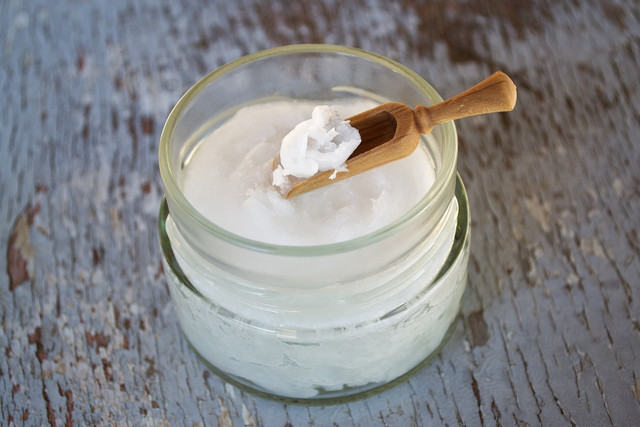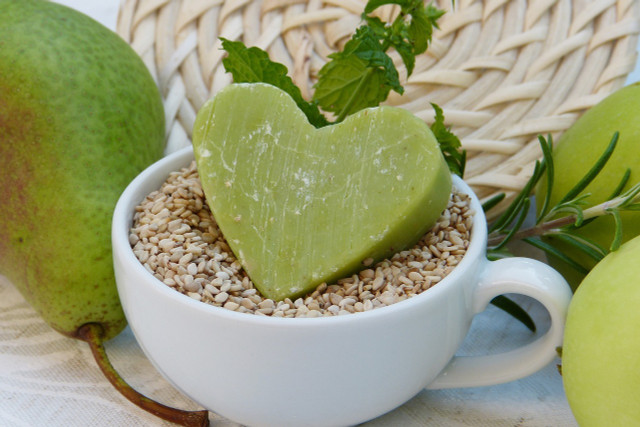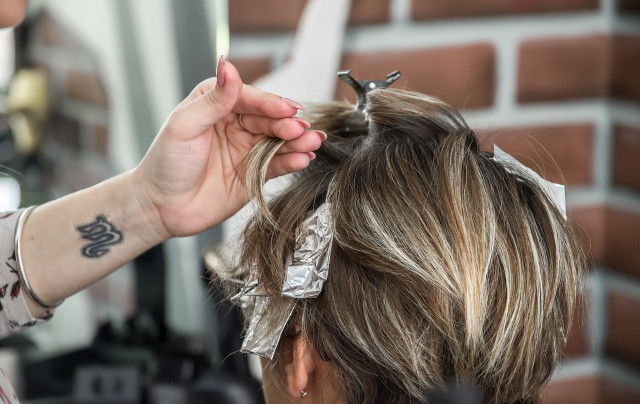Hair dye is a common way to change up your look. However, using hair dye at home can leave your skin more colorful than your hair. Here are eight natural tips to get rid of hair dye on skin.
1. Get Rid of Hair Dye on Skin with Organic Coconut Oil

(Foto: CC0 / Pixabay / DanaTentis)
This tip is for anyone with sensitive skin. Mix some water and coconut oil on a cotton swab and apply it to the hair dye. Coconut oil also acts preventatively against hair dye stains: try applying some to your hands before you begin dyeing. You can find out more about ethically sourced coconut oil here.
2. Make a Lemon Juice and Baking Soda Paste
Lemon juice can benefit your skin when used in low amounts due to its acidic nature and anti-microbial properties, according to scientific studies. Lemon juice works greatly to remove stains: simply mix 2 teaspoons of lemon juice with 2 teaspoons of baking soda to form a paste, which can be gently applied to your skin. The lemon juice works to fade the color, while the baking soda works to to exfoliate and clean your pores out. Instead of using packaged cleaners to remove hair dye from your skin, you can use this organic option with significantly less packaging and less chemicals.
The incorrect use of lemon juice and baking soda can harm your skin. Use with caution even in low amounts, and never use on your face.
3. Remove Hair Dye With More Hair Dye
One way to get rid of dry hair dye on your skin is to apply more hair dye and use water to clean it off. The fresh, wet hair dye will bind with the dry hair dye to make it easier to remove. This is recommended for smaller stains, as you don’t want to apply large amounts of hair dye to your skin. If a stain remains, use a second method afterwards.
4. Use an Olive-Based Soap Bar to Remove Hair Dye



(Foto: CC0 / Pixabay / silviarita)
A simple and easy trick is to purchase an olive-based soap bar and mix with some warm water. If you can, it’s always best to use a plant-based bar soap than soap that comes in plastic packaging like dish soap. Liquid dish soap costs 20 times more in packaging energy and five times more energy to produce, according to interdisciplinary studies. To use the bar soap, mix with water and gently scrub your face to remove the hair dye. Use baking soda alongside the bar for optimal color-removing and scrubbing effects. This method is best for cleaning hair dye off of your face or hands. Olive-based soap bars are available on Amazon**.
5. Remove Hair Dye From Skin with Witch Hazel
Taken from a flower shrub, ethically-sourced witch hazel is a good option for getting rid of hair dye on your face. Ethically-made witch hazel, which is made without alcohol, paraben, or phthalates, is available on Amazon**. Make sure the witch hazel you purchase is fully organic and cruelty-free. It is great at removing hair dye from your face because it is an astringent, meaning it removes color. Do not use if you have dry skin or are prone to irritation.
According to the international journal Industrial Crops and Products, natural oils should never be dumped down the sink as they are too highly concentrated and could damage important groundwater for agriculture and consumption. Instead, let any possible leftover oils evaporate in the sun.
Bonus: 3 Tips to Protect Your Skin From Hair Dye



(Foto: CC0 / Pixabay / jackmac34)
The next time you dye your hair you can take steps to prevent contact between the dye and your skin.
1. Apply a thin layer of coconut oil to your hand or hairline to create a layer of protection.
2. Use environmentally-friendly gloves: whether they are gardening gloves, dish gloves, or an old pair of winter gloves you have lying around. It’s best to use reusable gloves that you already own, but if you are worried about staining them we encourage you to avoid plastic or synthetic single-use gloves and instead opt for a plant-based or compostable version, like EcoGloves.
3. Wipe up spills as you go. If you see that some dye has gotten on your face or hands, gently wipe it off with wet towel before it dries.
Read on:
- Natural Ways to Wash Hair Dye Out of Your hair
- 6 Incredible Bar Soap Brands
- How to Use Coconut Oil for Your Hair: 3 Tips
Do you like this post?






